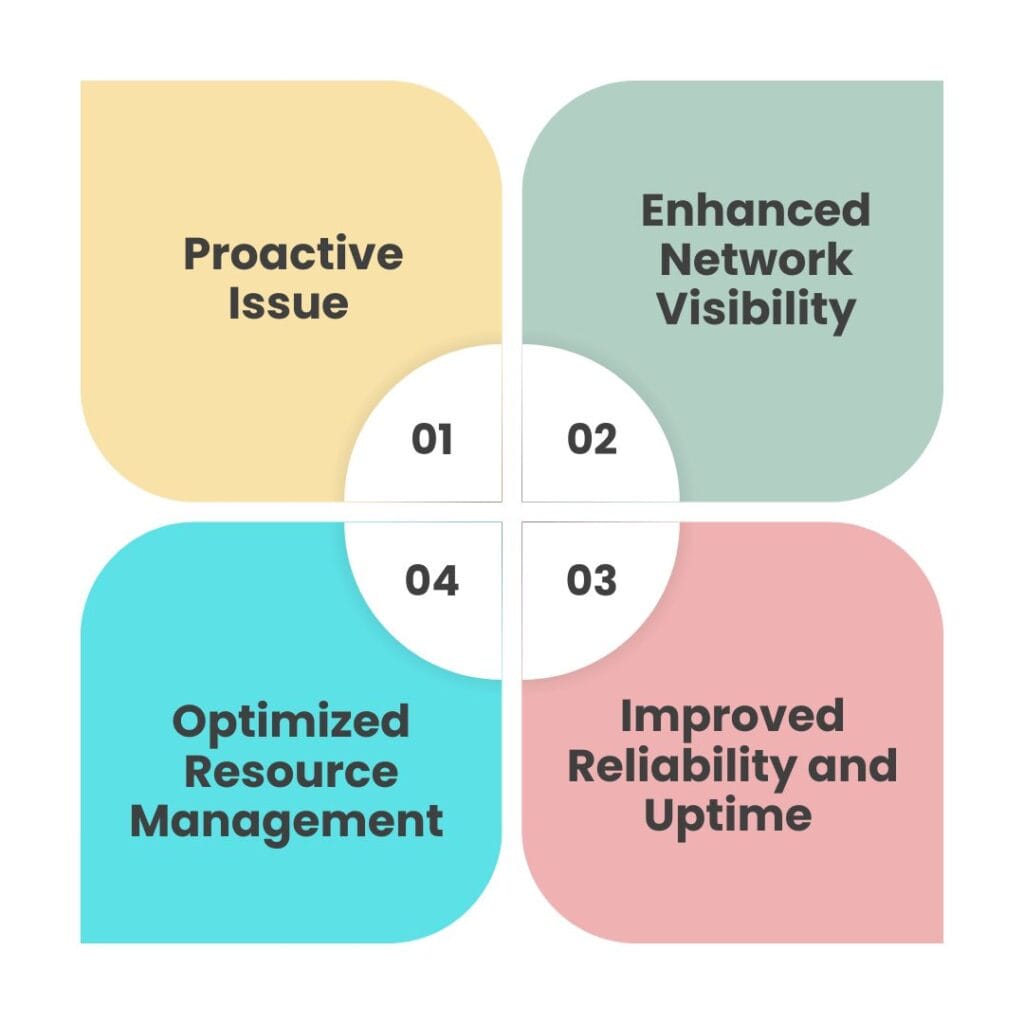Predictive analytics is a powerful tool that can help network operations teams become more efficient and effective. But how does it work?
Predictive analytics uses historical data and machine learning to predict future network issues before they happen. This allows teams to proactively address problems and optimize network performance.
By understanding how predictive analytics can benefit network operations, you can improve your organization’s connectivity, reduce downtime, and stay ahead of the competition.
Table of Contents
- What is Predictive Analytics?
- How Does Predictive Analytics Help Network Operation
- Use Cases and Examples
- Conclusion
What is Predictive Analytics?

Predictive analytics is all about using data to predict the future. It takes historical data and uses advanced statistical methods and machine learning to identify patterns and trends.
This allows organizations to make informed decisions and take proactive actions. In the context of network operations, predictive analytics can be a game-changer.
By analyzing data from network devices, traffic patterns, and past incidents, predictive analytics can help identify potential issues before they even occur. This gives network teams the ability to address problems quickly and prevent costly downtime.
The key to effective predictive analytics is having the right data. Network teams need to collect information from various sources, such as routers, switches, firewalls, and monitoring tools.
With this data, predictive models can be built to forecast things like hardware failures, bandwidth constraints, security threats, and more. This allows network operations to become more proactive and efficient.
How Does Predictive Analytics Help Network Operation

Here is how does predictive analytics help network operations:
Proactive Issue
Prevention Predictive analytics allows network teams to identify potential problems before they even happen.
By analyzing historical data and patterns, the system can predict when hardware might fail, bandwidth might get overloaded, or a security breach might occur.
This gives teams the ability to take action and address issues proactively, preventing costly downtime and disruptions.
Enhanced Network Visibility
Predictive analytics provides deeper insights into network behavior and performance. It can reveal usage patterns, pinpoint bottlenecks, and highlight areas that need optimization.
With this visibility, network teams can make more informed decisions about capacity planning, resource allocation, and infrastructure upgrades.
Optimized Resource Management
Armed with predictive insights, network operations can ensure resources are utilized efficiently. Teams can proactively add or reallocate bandwidth, storage, and computing power to meet changing demands.
This helps avoid over-provisioning or under-utilization, leading to cost savings and improved overall network health.
Improved Reliability and Uptime
By preventing issues before they arise, predictive analytics directly contributes to increased network uptime and reliability.
With fewer unexpected outages and disruptions, organizations can deliver a better experience for their users and avoid the financial and reputational impacts of downtime.
Use Cases and Examples
Predictive analytics has a wide range of applications in network operations. Here are a few key use cases and examples:
Predictive Maintenance for Network Hardware
Predictive analytics can be used to forecast when network hardware like routers, switches, and servers are likely to fail. By analyzing performance data, usage patterns, and other factors, the system can alert teams before an outage occurs. This allows for proactive maintenance and replacement, preventing costly downtime.
Bandwidth Forecasting and Capacity Planning
Network teams can use predictive analytics to forecast future bandwidth demands. By looking at historical usage trends, growth patterns, and upcoming events, the system can predict when and where bandwidth constraints might occur. This helps with capacity planning, ensuring the right amount of resources are available to meet demand.
Anomaly Detection and Security Event Prediction
Predictive analytics can also be applied to network security, detecting unusual activity that could indicate a cyber-attack or data breach. By establishing baselines for normal behavior, the system can identify anomalies and alert security teams. This allows for faster incident response and prevention of more serious security events.
These are just a few examples of how predictive analytics can be leveraged in network operations. As the technology continues to advance, we’ll likely see even more innovative use cases emerge to help network teams become more proactive, efficient, and secure.
Conclusion
In conclusion, predictive analytics is a powerful tool that can transform network operations. By using historical data and machine learning, predictive analytics allows teams to anticipate and address issues before they cause costly downtime or disruptions.
From proactive maintenance to capacity planning to security event prediction, the benefits of this technology are numerous. As network complexity continues to grow, embracing predictive analytics will become increasingly crucial for maintaining reliable, high-performing infrastructure. By staying ahead of potential problems, organizations can optimize their network operations and deliver better services to their customers.

